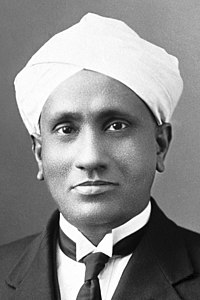
Photo from wikipedia
The determination of molecular diffusion across biomaterial interfaces, including those involving hydrogels and tissues remains important, underpinning the understanding of a broad range of processes including, for example, drug delivery.… Click to show full abstract
The determination of molecular diffusion across biomaterial interfaces, including those involving hydrogels and tissues remains important, underpinning the understanding of a broad range of processes including, for example, drug delivery. Current techniques using Raman spectroscopy have previously been established as a method to quantify diffusion coefficients, although when using spontaneous Raman spectroscopy, the signal can be weak and dominated by interferences such as background fluorescence (including biological autofluoresence). To overcome these issues, we demonstrate the use of the stimulated Raman scattering technique to obtain measurements in soft tissue samples that have good signal-to-noise ratios and are largely free from fluorescence interference. As a model illustration of a small metabolite/drug molecule being transported through tissue, we use deuterated (d7-) glucose and monitor the Raman C–D band in a spectroscopic region free from other Raman bands. The results show that although mass transport follows a diffusion process characterized by Fick’s laws within hydrogel matrices, more complex mechanisms appear within tissues.
Journal Title: ACS Applied Materials & Interfaces
Year Published: 2022
Link to full text (if available)
Share on Social Media: Sign Up to like & get
recommendations!